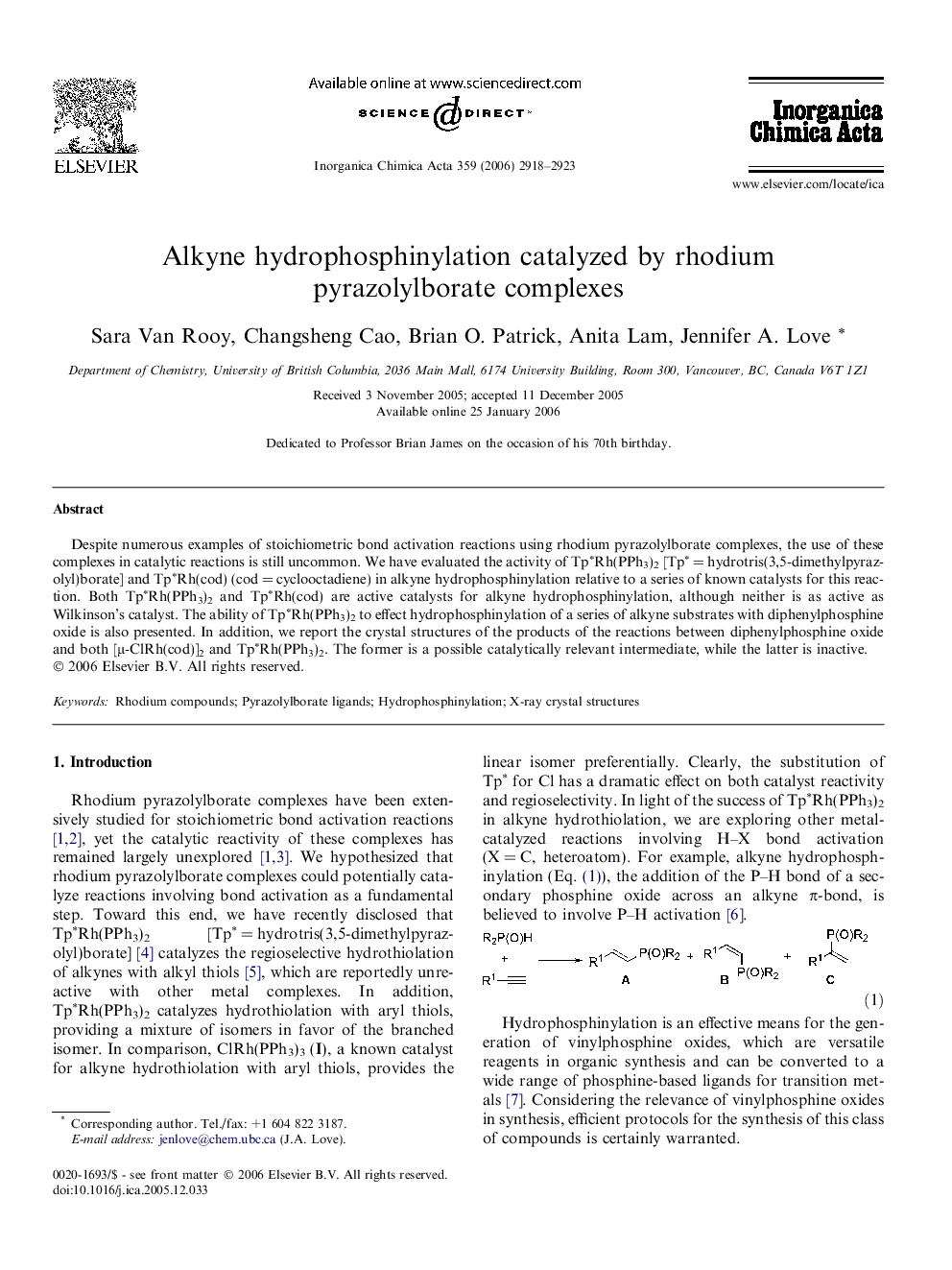| Article ID | Journal | Published Year | Pages | File Type |
|---|---|---|---|---|
| 1313033 | Inorganica Chimica Acta | 2006 | 6 Pages |
Despite numerous examples of stoichiometric bond activation reactions using rhodium pyrazolylborate complexes, the use of these complexes in catalytic reactions is still uncommon. We have evaluated the activity of Tp∗Rh(PPh3)2 [Tp∗ = hydrotris(3,5-dimethylpyrazolyl)borate] and Tp∗Rh(cod) (cod = cyclooctadiene) in alkyne hydrophosphinylation relative to a series of known catalysts for this reaction. Both Tp∗Rh(PPh3)2 and Tp∗Rh(cod) are active catalysts for alkyne hydrophosphinylation, although neither is as active as Wilkinson’s catalyst. The ability of Tp∗Rh(PPh3)2 to effect hydrophosphinylation of a series of alkyne substrates with diphenylphosphine oxide is also presented. In addition, we report the crystal structures of the products of the reactions between diphenylphosphine oxide and both [μ-ClRh(cod)]2 and Tp∗Rh(PPh3)2. The former is a possible catalytically relevant intermediate, while the latter is inactive.
Graphical abstractTp∗Rh(PPh3)2 [Tp∗ = hydrotris(3,5-dimethylpyrazolyl)borate] and Tp∗Rh(cod) (cod = cyclooctadiene) are active catalysts for alkyne hydrophosphinylation, although neither is as active as Wilkinson’s catalyst. Tp∗Rh(PPh3)2 effects hydrophosphinylation of a series of alkyne substrates. The crystal structures of the products of the reactions between diphenylphosphine oxide and both [μ-ClRh(cod)]2 and Tp∗Rh(PPh3)2 are also presented.Figure optionsDownload full-size imageDownload as PowerPoint slide
